In the latter half of the 20th century, a remarkable transformation occurred in the world of spirits—Irish whiskey, once on the brink of obscurity, experienced a renaissance that re-established it as a cherished global beverage. This revival, driven by a blend of tradition and innovation, not only saved an industry but also restored a significant piece of Ireland’s cultural heritage. From the influential figures who spearheaded the comeback to the modern techniques that enhanced its production, the resurgence of Irish whiskey is a tale of resilience and rebirth. This article explores the pivotal moments, key players, and enduring impact of this extraordinary revival.
Historical Context: The Decline of Irish Whiskey
Irish whiskey was once the most popular spirit in the world. In the 19th century, it enjoyed a golden age, with its smooth, triple-distilled character earning it a distinguished reputation. However, the early 20th century brought a series of challenges that led to a dramatic decline. Several factors contributed to this downturn:
The Rise and Fall
At the peak of its popularity, Irish whiskey was exported across the globe, particularly to the United States and the British Empire. Distilleries flourished, and the spirit became synonymous with quality and tradition. But this golden era was not to last.
Prohibition and Trade Barriers
The introduction of Prohibition in the United States in 1920 dealt a severe blow to the Irish whiskey industry. The loss of this key market led to a significant drop in demand. Additionally, trade barriers erected by the British government during the Irish War of Independence and the subsequent Anglo-Irish Trade War further hampered exports.

Technological and Market Shifts
While Irish whiskey struggled with external challenges, internal issues also contributed to its decline. The advent of continuous stills allowed Scotch whisky to be produced more cheaply and efficiently, giving it a competitive edge. Furthermore, the consolidation of distilleries and a focus on quantity over quality led to a deterioration in the reputation of Irish whiskey.
Economic Hardships
The global economic depression of the 1930s, coupled with World War II, strained the resources of Irish distilleries. Many were forced to close their doors, leading to a sharp decline in production. By the mid-20th century, only a handful of distilleries remained operational, and Irish whiskey had lost much of its former glory.
The stage was set for a renaissance, as the few surviving distilleries began to reassess their strategies, driven by a passion for restoring the legacy of Irish whiskey. This resurgence would be marked by significant efforts from key players, a return to traditional methods, and an eye toward innovation and global market expansion.
Catalysts for Change: Key Players and Events
As the mid-20th century waned, a few determined individuals and visionary distilleries embarked on a mission to revive Irish whiskey. Their efforts, combined with pivotal events, catalyzed the resurgence of this storied spirit.
Visionary Distilleries
Several distilleries played crucial roles in the revival. Among them, the Jameson Distillery stands out for its significant contributions. John Jameson & Son, founded in 1780, had maintained its reputation even during the industry’s darkest days. The distillery’s commitment to quality and tradition became a cornerstone of the revival effort.
Another key player was the Bushmills Distillery, the oldest licensed distillery in the world, which continued to produce whiskey throughout the industry’s decline. Their persistence and dedication to maintaining high standards helped set the stage for a renaissance.

Influential Figures
Individuals like John Teeling, founder of the Cooley Distillery, were instrumental in the resurgence. Teeling’s vision of an independent distillery producing high-quality, affordable whiskey challenged the industry norms and revitalized interest in Irish whiskey. His efforts not only introduced new brands but also redefined the market.
Additionally, the merger of several struggling distilleries into Irish Distillers in 1966 was a turning point. This consolidation aimed to stabilize production and improve quality, creating a unified front to tackle global markets. Figures like Tony O’Reilly, who led Irish Distillers, played a pivotal role in steering the industry towards recovery.
Milestone Events
Key events also marked the revival journey. The establishment of the Irish Whiskey Association in 2014, although post-dating the initial resurgence, formalized efforts to promote and protect the industry. This organization has been vital in ensuring the continued growth and global recognition of Irish whiskey.
The reopening of old distilleries and the establishment of new ones in the late 20th century also signaled a renewed interest in the craft. For example, the reopening of the Midleton Distillery in 1975 marked a significant investment in the future of Irish whiskey.
The Role of Marketing
Strategic marketing campaigns were crucial in rebranding Irish whiskey for a new generation. Emphasizing the heritage, craftsmanship, and unique qualities of Irish whiskey helped distinguish it from other spirits. The “Pure Pot Still” campaign highlighted traditional production methods, while modern branding efforts focused on the spirit’s smooth, approachable character.
Economic and Policy Support
Government support and favorable economic policies also played a role. Tax incentives for distilleries, investments in tourism, and the promotion of Irish culture globally all contributed to the industry’s revival. The introduction of the European Union’s geographical indication (GI) protection for Irish whiskey in 1989 provided an additional layer of authenticity and prestige.
Innovation and Tradition: The Blend of Old and New
The revival of Irish whiskey in the late 20th century was marked by a delicate balance between preserving time-honored traditions and embracing innovative techniques. This blend of old and new not only revived the industry but also set the foundation for its modern success.
Reviving Traditional Methods
At the heart of Irish whiskey’s resurgence was a return to traditional production methods. Distilleries reinstated the use of copper pot stills, a hallmark of Irish whiskey that had been overshadowed by more industrial methods. These stills, known for producing rich and complex flavors, became a symbol of quality and heritage.
Embracing New Techniques
While tradition was paramount, innovation played a crucial role in rejuvenating the industry. Modern distilleries adopted advanced technologies to enhance production efficiency and quality control. For example, computerized systems allowed for more precise fermentation and distillation processes, ensuring consistency in every batch.

Craftsmanship and Expertise
The resurgence was also fueled by a renewed focus on craftsmanship. Master distillers, with decades of experience, guided the process, blending their deep knowledge of traditional techniques with contemporary innovations. This fusion of expertise ensured that the spirit retained its authentic character while meeting modern standards.
Experimentation with Flavors
Innovation extended to the creation of new and exciting flavor profiles. Distilleries began experimenting with different cask types for aging, such as sherry, port, and bourbon barrels. This experimentation introduced unique flavors and aromas, appealing to a broader range of consumers and revitalizing interest in Irish whiskey.
Sustainable Practices
In response to growing environmental concerns, many distilleries adopted sustainable practices. Initiatives such as using renewable energy sources, recycling water, and sourcing local ingredients helped position Irish whiskey as a forward-thinking industry committed to sustainability.
Collaborations and Partnerships
Collaborations between distilleries and other industries, such as craft beer and gourmet food producers, also played a role in the resurgence. These partnerships not only expanded the market for Irish whiskey but also introduced the spirit to new audiences through innovative products and experiences.
Market Expansion: Ireland and Beyond
The late 20th century resurgence of Irish whiskey was not just a revival within Ireland but a global phenomenon. The strategic expansion into international markets played a critical role in revitalizing the industry and establishing Irish whiskey as a beloved spirit worldwide.
Domestic Market Growth
Within Ireland, the renewed interest in Irish whiskey was palpable. Distilleries ramped up production to meet the growing domestic demand. The revitalization efforts resonated with the local population, fostering a sense of pride and connection to the cultural heritage embodied by Irish whiskey. Tasting rooms, tours, and whiskey festivals became popular, further embedding the spirit in the local culture.
Penetrating International Markets
Irish whiskey’s international market expansion was driven by strategic marketing and distribution efforts. Distilleries partnered with global distributors to ensure their products reached shelves in key markets such as the United States, Canada, and Japan. The distinct smoothness of Irish whiskey, often triple-distilled for extra refinement, appealed to a wide range of palates, helping it stand out in a crowded market.
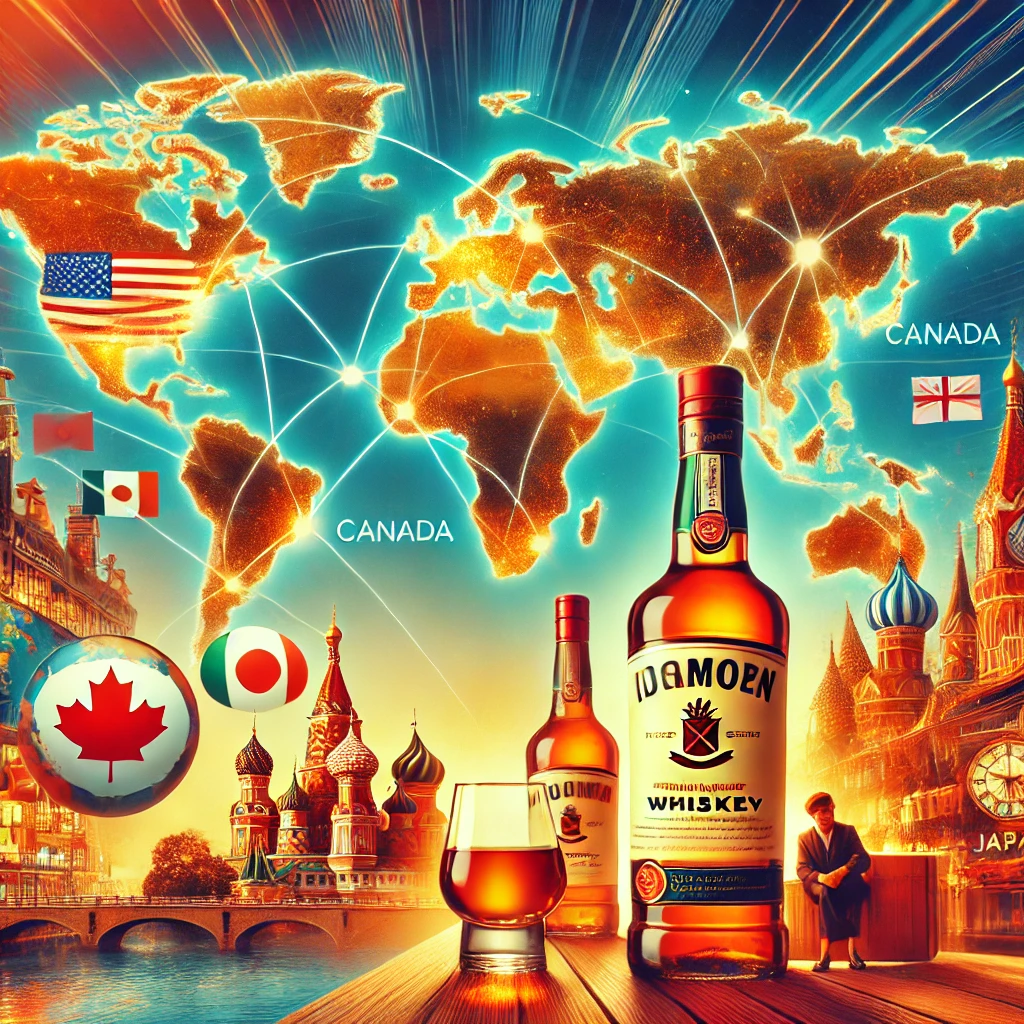
The Role of Branding
Effective branding was crucial in capturing the global audience. Brands like Jameson and Bushmills leveraged their rich histories and heritage in their marketing campaigns, emphasizing authenticity and quality. Newer brands also emerged, offering innovative takes on traditional Irish whiskey, thus appealing to both purists and new enthusiasts.
Tourism and Whiskey Trails
The development of whiskey tourism played a significant role in market expansion. Ireland’s whiskey trails attracted enthusiasts from around the world, offering immersive experiences that included distillery tours, tastings, and educational sessions about the production process. These experiences not only boosted local economies but also created global ambassadors for Irish whiskey.
Awards and Recognition
The resurgence was further bolstered by numerous awards and accolades received by Irish whiskeys at international competitions. These honors validated the quality and craftsmanship of Irish whiskey, enhancing its reputation and demand globally. Prestigious awards helped cement the position of Irish whiskey as a top-tier spirit, encouraging connoisseurs and casual drinkers alike to explore its offerings.
Export Statistics
By the turn of the 21st century, export statistics reflected the success of these efforts. Irish whiskey exports grew exponentially, with significant year-on-year increases. The United States emerged as a major market, accounting for a substantial portion of these exports. This growth not only revitalized the industry but also contributed significantly to Ireland’s economy.
Legacy and Impact: The Modern Irish Whiskey Industry
The resurgence of Irish whiskey in the late 20th century has had a profound and lasting impact on both the industry and Ireland’s cultural heritage. This section explores the long-term effects of this revival and the current state of the Irish whiskey industry.
Long-term Effects of the Revival
The revival efforts of the late 20th century laid a strong foundation for the future. Distilleries that once struggled to survive now thrive, contributing significantly to Ireland’s economy. The resurgence has ensured that the craft of whiskey-making is preserved and passed down to new generations, maintaining a vital part of Ireland’s cultural identity.
Growth and Diversity in the Industry
Today, the Irish whiskey industry is characterized by growth and diversity. Numerous new distilleries have opened across Ireland, each bringing its unique approach to whiskey production. This diversity has led to a wide range of flavors and styles, from traditional single malts to innovative blends and experimental cask finishes.
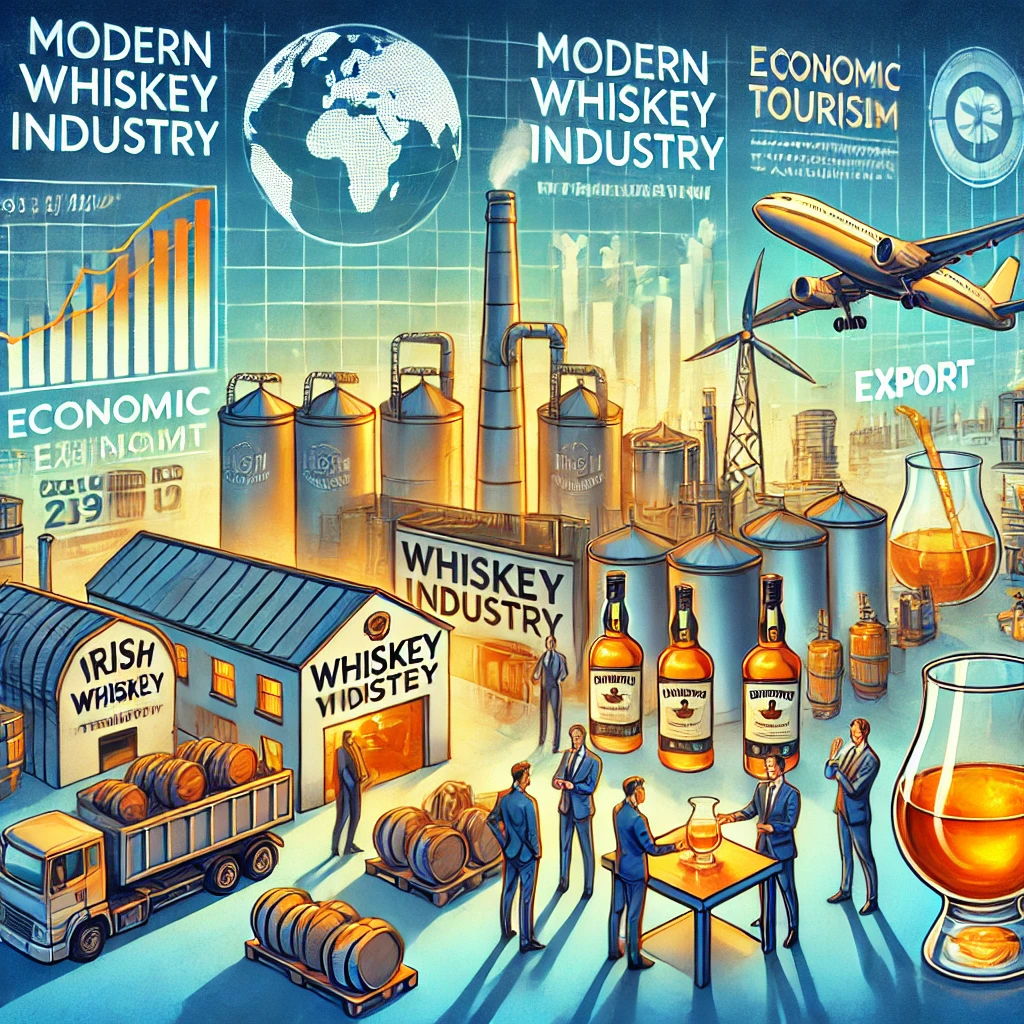
Global Recognition and Awards
Irish whiskey continues to gain global recognition, consistently winning awards at prestigious international competitions. This acclaim not only boosts the industry’s reputation but also attracts new consumers, further driving the growth of Irish whiskey. Brands like Redbreast, Green Spot, and Teeling have become synonymous with quality and innovation.
Tourism and Cultural Significance
Whiskey tourism remains a significant aspect of the industry, drawing enthusiasts from around the world. Distilleries have become cultural landmarks, offering tours, tastings, and immersive experiences that celebrate the rich history and craftsmanship of Irish whiskey. This tourism not only boosts local economies but also enhances Ireland’s global cultural footprint.
Economic Contributions
The economic impact of the Irish whiskey industry is substantial. Exports continue to rise, contributing billions to Ireland’s economy. The industry’s success has also led to job creation, both directly in distilleries and indirectly through tourism and related sectors. Government support and favorable policies have further bolstered this economic growth.
Future Prospects
The future of Irish whiskey looks bright, with continued innovation and expansion on the horizon. Distilleries are exploring new markets and developing unique products to meet changing consumer preferences. Sustainability practices are also becoming more prevalent, ensuring that the industry can thrive while minimizing its environmental impact.
Conclusion
The late 20th century resurgence of Irish whiskey is a testament to the power of tradition, innovation, and resilience. From the brink of obscurity, Irish whiskey has risen to global prominence, reclaiming its place as a cherished spirit worldwide. The dedicated efforts of visionary distillers, the embrace of both old and new techniques, and strategic market expansion have all contributed to this remarkable comeback.
Today, the Irish whiskey industry stands as a symbol of cultural pride and economic vitality. With its rich history and ongoing innovation, Irish whiskey continues to captivate new generations of enthusiasts. The legacy of this resurgence is not only seen in the thriving distilleries but also felt in the cultural and economic fabric of Ireland.
As we look to the future, the Irish whiskey industry is poised for continued growth and success. The blend of heritage and modernity, along with a commitment to quality and sustainability, ensures that Irish whiskey will remain a beloved and respected spirit for years to come. The story of its revival is a compelling reminder that with perseverance and passion, even the oldest traditions can find new life in the modern world.


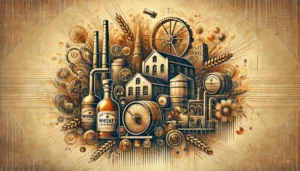
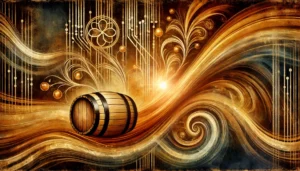

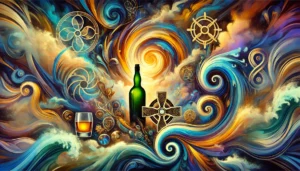


Be First to Comment